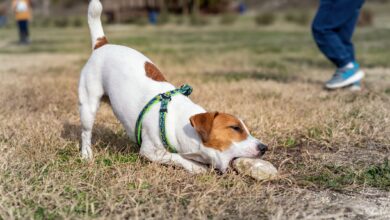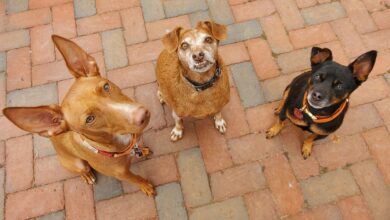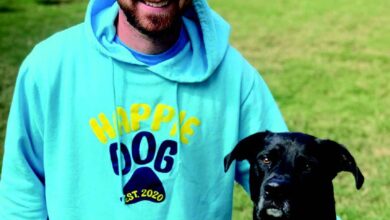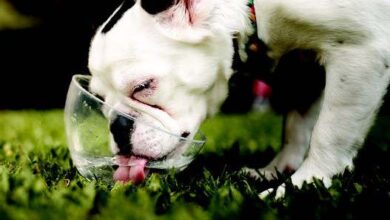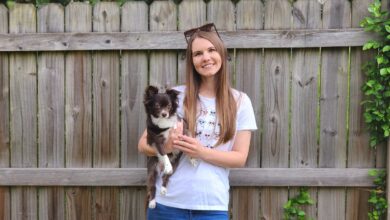How to Get a Puppy to Stop Biting – Dogster
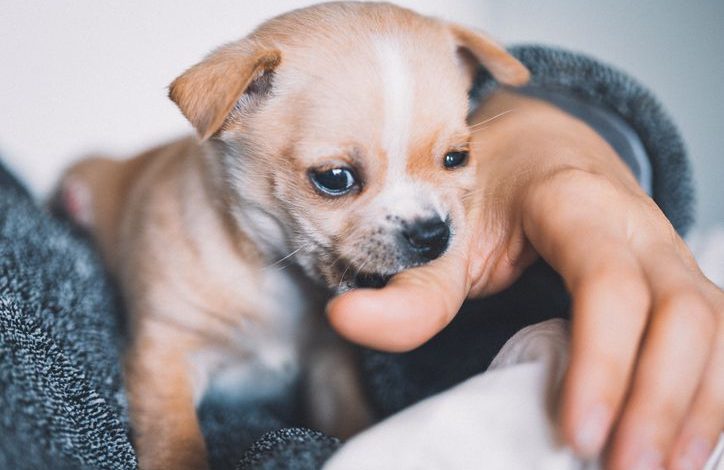
[ad_1]
Biting is frustrating behavior for new puppy owners, but the behavior is very natural. Puppies aren’t trying to be mean or destructive when they bite at people or things, they are just exploring the world. That said, it’s important for puppies to learn to keep their mouths to themselves at a young age to prevent behavioral problems in the future: a puppy mouthing or biting is more socially acceptable than an adult dog mouthing at people. Training a puppy not to bite takes a patient and gentle approach.
Why do puppies bite?
Puppies bite people and objects for a variety of reasons, including exploring the world through their mouths. As a result, biting and chewing are normal parts of puppy development. Common reasons that your puppy might be biting you or things around your house include:
- Teething — As they grow and develop, puppies lose baby teeth and their adult teeth grow in. This process often actively happens right around the time that puppies go home to their forever families. Just like how human babies can be irritable when teething or stick everything in their mouths while trying to massage their gums, the same is true for teething puppies. Many puppies chew or bite at things to relieve discomfort from teething.
- Stress relieving — What do puppies have to be stressed about? They eat, sleep and play. But, there is a lot to be stressed about — their world is confusing and changing. Puppies are adjusting to all kinds of new situations, people, places and experiences. Mouthing and chewing help puppies reduce some of that stress.
- Boredom — When puppies and dogs are bored, they look for things to chew. Chewing is fun and a way that they can entertain themselves. This is something to encourage (with dog-safe chews) because it’s good for our puppies.
- Play —Young puppies often haven’t mastered a skill called bite inhibition, or awareness about using their mouths while playing. Young puppies generally learn from their littermates to modulate how much and how hard they can bite while playing. When you bring a young puppy home, they may still be developing and refining these skills.
How to train a puppy not to bite:
Step 1: Make sure the puppy has lots and lots of outlets for safe and appropriate chewing, including puppy-safe chews and toys specifically designed to be chewed. We don’t want to stop our puppies from chewing, we just want them to chew on safe and appropriate things.
Step 2: Supervision is very important for puppies. Set them up for success by not leaving them with access to things that you don’t want them to chew. Sometimes referred to as “puppy proofing,” you need to prevent your puppy from having access to things she might bite or chew that could be harmful or damaged.
Step 3: If your puppy is biting you when you play or are engaging with her, don’t yell or punish your puppy. Instead, when your puppy bites, make a high-pitched crying sound and then redirect your puppy with a toy that’s safe and appropriate for hr to bite or chew on. By making a high-pitched crying sound, you’re telling your puppy that the biting hurts. Doing this mimics, the same feedback puppies get from their littermates about how to bite softer or less while playing.
Step 4: Be consistent while playing with and training your puppy. Puppy bite training should be something everyone in the family is on board with by consistently gently redirecting your puppy to safe chew toys.
How to stop puppy biting: a recap
The best way to stop a puppy from biting is to prevent inappropriate biting as much as possible by providing your puppy with plenty of appropriate things to chew. When your puppy bites things he shouldn’t, redirect him to toys that are appropriate for tugging and chewing. If your puppy bites at you, he isn’t trying to be mean. Don’t yell at your puppy or scold him. Instead, make a crying noise mimicking what his littermates would do. Then, redirect your puppy to play with, mouth and bite an appropriate toy or chew.
[ad_2]
Source link


